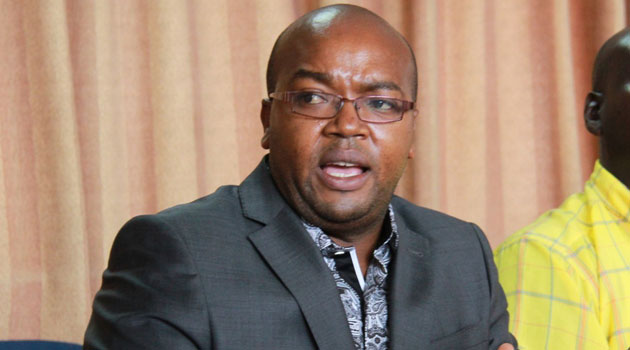
Ministry of Health Principal Secretary Dr. Nicholas Muraguri addressing the press.
BY SAM ALFAN
At least 16% of all persons seeking outpatient treatment in public hospitals suffer from malaria, a disease that remains a major cause of illness and death in the country.
Ministry of Health Principal Secretary Dr. Nicholas Muraguri said that even though the malaria prevalence has dropped from 11 percent in 2010 to 8 percent in 2015, the slight increment of four to eight percent in coastal region is an indication that more effort should be put to sustain the gains made.
He said prevalence in malaria in the Lake endemic region dropped from 38 percent to 24 percent while the other areas in the country remained below 5 percent.
The PS noted that the ministry was emphasizing on the need of households to use mosquito nets and having at least one long- lasting Insecticidal net (LLIN) and using preventive medicines during pregnancy, since prevention is a key strategy in malaria control.
Muraguri said ownership of nets at household level has improved with 60 percent households using LLIN as compared to 40 percent in 2010.
“At least 56 percent of children below five, sleep under long-lasting Insecticidal net compared to 39 percent in 2010 while pregnant women using the nets has improved to 58 percent in 2015 from 36 percent in 2010,” added the PS.
He said expectant women in both the lake and Coastal endemic areas are targeted to receive preventive medicines during their pregnancy.
The PS made the remarks today in a speech read on his behalf by the Acting Director of Medical Services Dr. Jackson Kioko during the launch of the Kenya Malaria Indicator Survey (KMIS) 2015 report at a Nairobi hotel.
Muraguri said according to the survey, 90 percent of children are currently receiving the recommended medicine compared to 50 percent in 2010, an achievement he said was close to the national target of 100 percent.
He said to address the malaria burden, the ministry will continue to implement targeted interventions which include malaria diagnostics and treatment, provision of nets, spraying households, provision of preventive medicines to pregnant women, surveillance and behavior change communication activities.
PS Muraguri also commended development and technical partners for their continuous support, adding there is need to increase investment in malaria control interventions in order to improve and sustain the coverage levels.
The 2015 Survey that was undertaken by the National Malaria Control Programme of the Ministry of Health in Coordination with the Kenya National Bureau of Statistics shows that malaria prevalence varies in the country with Coast endemic with the highest at eight percent while Lake endemic zones is rated at 27 percent.
The report also shows that less than 10 percent of children aged six months to 14 were found to have malaria.
Present at the launch were the Kenya National Bureau of Statistics Director General Zachary Mwangi, The World Health Organization Representative Dr. Custodia Mandlhate and the USAID Director, Office of Population and Health Barbara Hughes.






